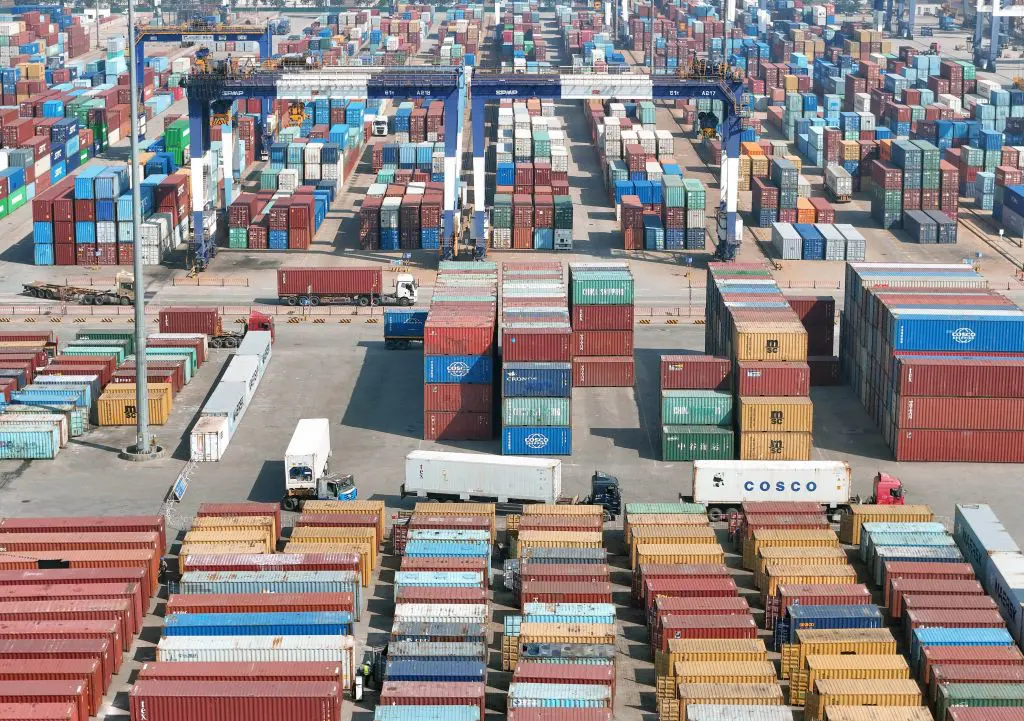MESTRE (VENICE) (ITALPRESS) – In Italy, the introduction of duties sought by the Trump administration could penalize, in particular, exports from the South of Italy. Unlike the rest of the country, in fact, almost all southern regions have a low diversification of products sold in foreign markets. Therefore, if after steel, aluminum and their derivatives, the U.S. – and, in a chain, other countries in the world – decides to raise trade barriers to other goods as well, the negative effects for our production system could be felt more in territories where the economic dimension of exports is strongly conditioned by a few commodity sectors.
The analysis carried out by the CGIA Studies Office is based on the measurement of the product diversification index of exports by region; a parameter that weighs the economic value of exports of the top 10 commodity groups against total regional foreign sales. Where the diversification index is lower, the more differentiated regional exports are, making them less sensitive to disruptions in international trade. Conversely, the higher the incidence of the value of the top 10 exported products in total foreign sales, that territory is more exposed to potential downturns in international trade.
The region with the worst diversification index nationwide, according to the CGIA Studies Office, is Sardinia (95.6 percent), where exports of products from oil refining dominate. It is followed by Molise (86.9 percent)-characterized by a particularly high weight of the sale of chemical products/plastics and rubber, motor vehicles and bakery products-and Sicily (85 percent), which has a strong vocation in the refining of petroleum products. Among the territorial realities of the South, only Puglia has a high level of diversification (49.8 percent).
A figure that places it third nationally among the regions potentially least at risk from any extension of duties to other commodities. With the exception of Puglia, the geographic areas theoretically least at risk are all in the North. Lombardy (with an index of 43 percent) is hypothetically the least “at risk.” It is followed by Veneto (46.8), Puglia (49.8), Trentino Alto Adige (51.1), Emilia Romagna (53.9) and Piedmont (54.8).
In 2024, the CGIA Studies Office points out, our foreign sales reached 623.5 billion euros, 2.4 billion less (-0.4 percent) than the results achieved in 2023. However, if we compare it with 2019, the pre-Covid year, our exports grew by an impressive 143 billion (+30 percent). The leading region remains Lombardy with 163.9 billion in foreign sales. It is followed by Emilia Romagna with 83.6 and Veneto with 80.1. Of note is the fourth place achieved by Tuscany, which, thanks in particular to medicines and the processing of jewelry and precious stones, with 63 billion in exports has surpassed Piedmont; a region, the latter, which unfortunately suffers from the severe crisis that has hit the automotive sector throughout Europe. It should be noted that compared to 2023, Tuscany saw its export value increase by 7.5 billion (+13.6 percent) in 2024.
Milan is the province in Italy that exports the most. With 57.9 billion registered in 2024 it remains the undisputed leader. It is followed by Turin with 25.7 and Florence with 24.5. Thanks to the foreign sale of medicines/pharmaceutical preparations, Tuscany’s regional capital jumped powerfully to third place nationwide. Just off the podium we spot Vicenza with 22.7 billion, Bergamo with 20.6 and Brescia with 20.1. Our best-selling commodity item in the world, the CGIA Studies Office points out, is medicines and drugs.
In 2024, the economic value cubed nearly 50.8 billion (up 10.3 percent from 2023). This was followed by other general-purpose machinery (furnaces, burners, lifting/moving machinery and apparatus, etc.) with 34 billion (+2 percent), general-purpose machinery (engines, turbines, compressors, other pumps, etc.) with 29 billion (+0.1 percent), other special-purpose machinery (for metallurgy, food industry, laundries, Tac, etc.) with 24 billion (-3 percent), and motor vehicles with 23.8 billion (-16.7 percent). Among the very first positions we highlight the score achieved by jewelry and precious stone processing, which reached 15.9 billion in exports in 2024 (+38.9 percent compared to 2023).
– IPA Agency Photos –
(ITALPRESS)

